Note: This not airlines official number. It may connect you with travel agency.
Posted on May 11, 2023 by Admin
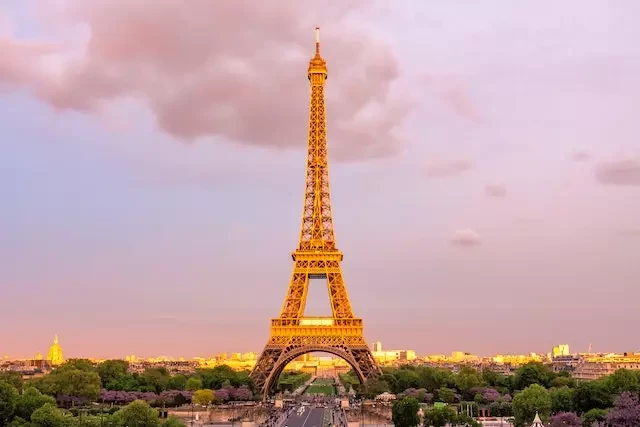
Paris, the City of Love, is undoubtedly one of the most enchanting and romantic cities in the world. With its rich history, exquisite architecture, world-class museums, and vibrant atmosphere, Paris is a dream destination for travelers seeking a truly unforgettable vacation. Whether you're strolling along the Seine River, admiring iconic landmarks, savoring delectable cuisine, or immersing yourself in art and culture, Paris offers an abundance of experiences to captivate your senses. In this article, we will explore the 10 best places to visit in Paris for a dreamy vacation in 2023.
Table of Content
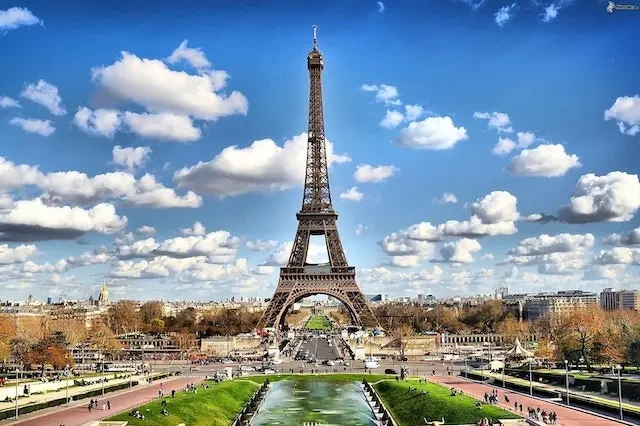
The Eiffel Tower is an iconic landmark situated in Paris, France. It stands tall and proud, dominating the city's skyline and capturing the imagination of visitors from around the world. Named after its designer, Gustave Eiffel, the tower was constructed for the 1889 Exposition Universelle, a world fair held to celebrate the 100th anniversary of the French Revolution.
Rising to a height of 324 meters (1,063 feet), the Eiffel Tower was the tallest man-made structure in the world until the completion of the Chrysler Building in New York City. Its distinctive lattice structure, made of iron, showcases the brilliance of engineering and has become a symbol of both Paris and France.
Best Time to Visit
The best time to visit the Eiffel Tower in Paris depends on your personal preferences and priorities. Here are a few factors to consider when deciding the ideal time to visit:
Weather: The weather in Paris can greatly impact your experience. The spring (April to June) and fall (September to October) months generally offer pleasant temperatures and milder weather, making them popular choices for tourists. Summers (July and August) can be quite hot and crowded, while winters (December to February) can be cold and rainy.
Crowds: The Eiffel Tower attracts millions of visitors each year, so it's important to consider the crowds. If you prefer a less crowded experience, try visiting during weekdays, early mornings, or late evenings. Avoiding peak tourist seasons, such as summer and major holidays, can also help you avoid long queues.
Lighting: The Eiffel Tower is especially stunning when it lights up at night. From dusk until 1 a.m., the tower sparkles for five minutes every hour. The illuminated tower against the night sky creates a magical ambiance. Consider visiting during the evening hours to witness this captivating display.
Events and Festivals: Paris hosts numerous events and festivals throughout the year. These events can add vibrancy to your visit, but they can also attract larger crowds. Check the Paris tourism website or local event calendars to see if any festivals or special events align with your interests.
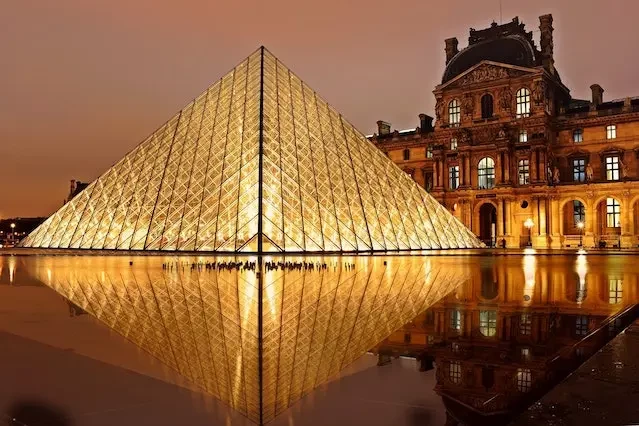
Home to some of the world's most renowned masterpieces, the Louvre Museum is a treasure trove of art and history. From Leonardo da Vinci's Mona Lisa to the Venus de Milo, this vast museum will transport you through centuries of artistic brilliance.
Best Time to Visit
The Louvre Museum in Paris is one of the most renowned cultural institutions in the world. To make the most of your visit, here are some factors to consider when determining the best time to go:
Weekdays: The Louvre tends to be less crowded on weekdays compared to weekends. If possible, plan your visit for a Tuesday or Wednesday when the museum sees relatively fewer visitors. Avoiding weekends can help you avoid long lines and have a more comfortable experience exploring the museum.
Morning or Evening: Arriving early in the morning or visiting in the late afternoon can help you beat the crowds. Many tourists tend to arrive later in the morning, so starting your visit when the museum opens or visiting during the last few hours before closing can give you more space and shorter queues for popular exhibits.
Off-Peak Season: The Louvre Museum is a popular tourist attraction year-round, but there are periods when visitor numbers are lower. Consider visiting during the shoulder seasons of spring (April to June) and autumn (September to October) when the weather is generally pleasant, and tourist crowds are relatively smaller compared to the peak summer season.
Online Ticket Reservations: To save time and avoid queues, it is highly recommended to purchase your tickets online in advance. The Louvre's official website offers ticket reservations, allowing you to select a specific entry time. This way, you can skip the ticket lines and head directly to the entrance at your designated time.
Special Exhibitions: The Louvre Museum hosts temporary exhibitions alongside its permanent collection. If there's a specific exhibition you're interested in, check its duration and plan your visit accordingly. Keep in mind that during popular exhibitions, the museum might be busier, so consider arriving early or visiting during weekdays to minimize crowds.
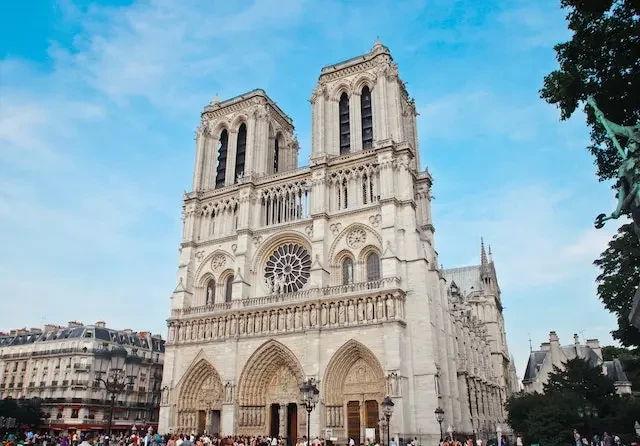 Z
Z
Standing as a testament to Gothic architecture, Notre-Dame Cathedral is a masterpiece in its own right. Marvel at its towering spires, intricate stone carvings, and stunning stained glass windows. Take a moment to appreciate the grandeur of this iconic cathedral and explore its interior to admire its rich history and religious significance.
Best Time to Visit
The Notre-Dame Cathedral in Paris is a magnificent architectural masterpiece and a popular tourist attraction. When planning your visit to Notre-Dame, here are some considerations for choosing the best time:
Reconstruction and Closure: Please note that as of my knowledge cutoff in September 2021, Notre-Dame Cathedral was undergoing extensive reconstruction after the fire that occurred in April 2019. It is essential to check the latest updates on the cathedral's reopening and accessibility before planning your visit. The restoration work might impact visitor access and availability.
Weekdays: If the cathedral is open for visitation, weekdays generally attract fewer tourists compared to weekends. Choosing a weekday, especially during the early morning or late afternoon, can help you avoid larger crowds and have a more serene experience exploring the cathedral.
Early Morning or Late Evening: To have a quieter visit and avoid the peak tourist hours, consider arriving early in the morning or visiting in the late evening. This way, you can enjoy a more peaceful atmosphere and take your time to appreciate the architectural details and spiritual ambiance of the cathedral.
Special Events: Notre-Dame Cathedral occasionally hosts special events, such as concerts, religious services, or ceremonies. These events can add a unique touch to your visit. However, they might also attract larger crowds. If you're interested in attending a specific event, check the cathedral's schedule in advance to plan accordingly.
Construction Viewing: Given the ongoing reconstruction, it's possible that there might be designated areas or viewpoints where visitors can observe the restoration work. If available, this can offer a unique perspective on the restoration process and the craftsmanship involved. Check for any guided tours or viewing opportunities related to the reconstruction.
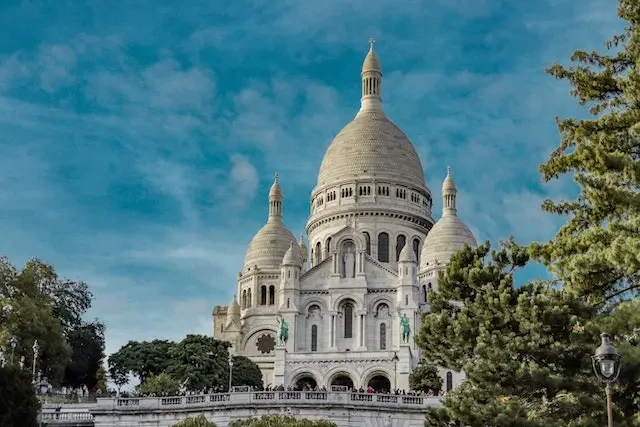
Immerse yourself in the bohemian charm of Montmartre, a vibrant neighborhood that has inspired countless artists. Wander through its winding streets, visit the famous Sacré-Cœur Basilica perched on a hilltop, and discover cozy cafes, art studios, and lively street performers. Montmartre's unique atmosphere captures the essence of artistic Paris.
Best Time to Visit
Montmartre is a charming neighborhood in Paris known for its bohemian atmosphere, artistic history, and iconic landmarks such as the Sacré-Cœur Basilica. To make the most of your visit to Montmartre, consider the following factors when determining the best time to go:
Morning: Montmartre is a popular destination, and it can get quite crowded, especially during the peak tourist season. To avoid larger crowds, consider starting your visit in the morning when the neighborhood is generally quieter. You can explore the streets, cafés, and attractions with more ease and enjoy a peaceful atmosphere.
Weekdays: Weekends tend to be busier in Montmartre, with more tourists and locals visiting the area. If possible, plan your visit for a weekday when there are fewer people around. This can give you a more relaxed experience and allow you to fully appreciate the neighborhood's unique character.
Sunset: Montmartre offers breathtaking views of Paris, especially from the steps in front of the Sacré-Cœur Basilica. Consider visiting in the late afternoon or early evening to witness the stunning sunset over the city. The warm golden light and the panoramic view of Paris make this a magical time to be in Montmartre.
Street Performances and Artists: Montmartre has a long history of attracting artists, and you can often find street performers, painters, and musicians showcasing their talents in the neighborhood. To experience the lively artistic atmosphere, visit during the afternoon or early evening when the artists are more likely to be out and about.
Off-Peak Season: If you prefer a less crowded experience, consider visiting Montmartre during the shoulder seasons of spring (April to June) or autumn (September to October). The weather is generally pleasant during these times, and the neighborhood is less crowded compared to the peak summer season.
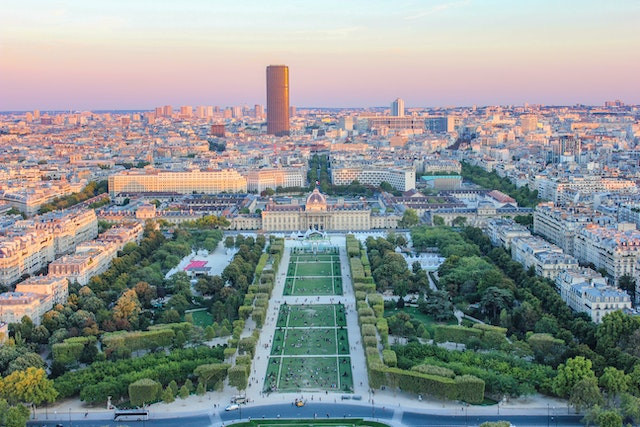
Experience the glamor of the Champs-Élysées, one of the most famous avenues in the world. This bustling street is lined with high-end boutiques, cafes, theaters, and iconic landmarks like the Arc de Triomphe. Take a leisurely stroll, indulge in shopping, or simply soak in the vibrant energy of this renowned boulevard.
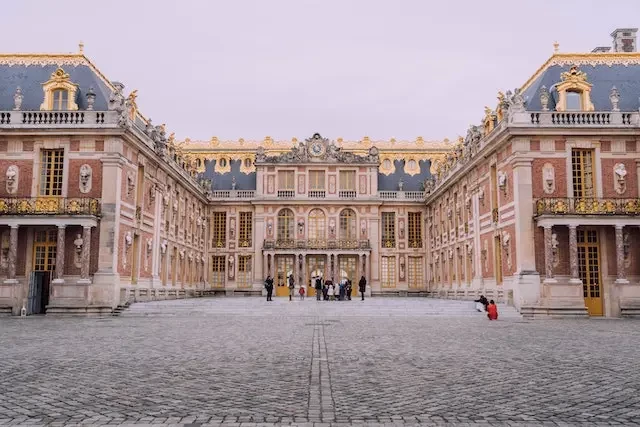
The Palace of Versailles has a captivating history that dates back to the 17th century. Originally built as a hunting lodge for King Louis XIII, it was later expanded into an extravagant palace by his son, Louis XIV. Let's delve into the various aspects that make the Palace of Versailles an unrivaled treasure:
The construction of the Palace of Versailles began in 1664 and took several decades to complete. Designed by renowned architect Louis Le Vau, the palace seamlessly blends elements of Baroque and Classical architectural styles. Its majestic façade, adorned with intricate sculptures and ornate details, leaves visitors in awe.
As you step into the Palace of Versailles, prepare to be transported to a world of unrivaled luxury and opulence. The interior is a testament to the artistic mastery of the period, with lavishly decorated rooms featuring exquisite paintings, gilded furniture, and intricate tapestries. The Hall of Mirrors, with its dazzling mirrors and sparkling chandeliers, is a sight to behold.
Beyond the palace walls lies a sprawling expanse of meticulously manicured gardens. Designed by landscape architect André Le Nôtre, the gardens of Versailles are a work of art in their own right. With perfectly aligned rows of trees, symmetrical flower beds, and enchanting fountains, the gardens provide a tranquil escape from the grandeur of the palace.
Located within the vast estate of Versailles are the Trianon Palaces, a set of smaller palaces that served as private retreats for the French monarchs. The Grand Trianon, with its pink marble façade and elegant gardens, stands as a testament to the refined taste of Louis XIV. The Petit Trianon, on the other hand, was a favorite of Marie Antoinette, who transformed it into a haven of comfort and charm.
No visit to the Palace of Versailles would be complete without experiencing the magnificence of the Hall of Mirrors. This iconic gallery, stretching over 70 meters, features 17 arched windows that reflect an array of natural light onto the stunning mirrors adorning the opposite wall. It was in this very hall that many historic events took place, including the signing of the Treaty of Versailles in 1919.
The Palace of Versailles is also home to the Royal Chapel, an architectural marvel that showcases the religious devotion of the French monarchy. With its grand organ, intricately carved woodwork, and awe-inspiring paintings, the chapel served as a place of worship for the royal family. Visitors can still witness its stunning beauty and experience the spiritual ambiance that pervades
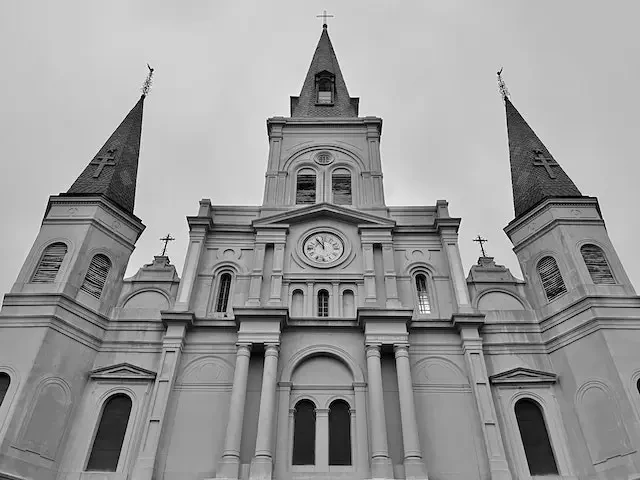
Step into a world of exquisite beauty at Sainte-Chapelle, a stunning medieval chapel renowned for its breathtaking stained glass windows. Admire the vibrant colors and intricate details as sunlight filters through the magnificent glass panels. Sainte-Chapelle is a hidden gem that will leave you in awe of its architectural splendor.
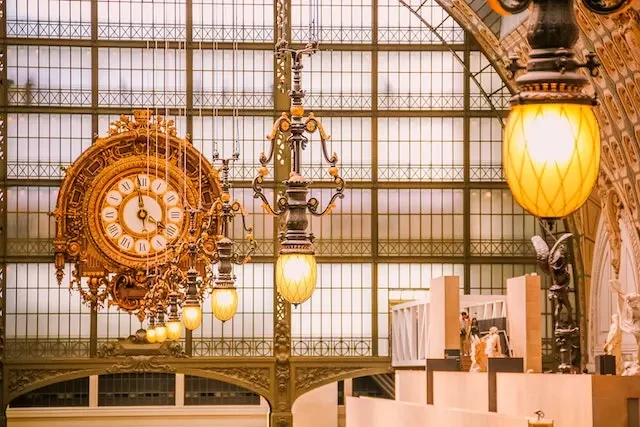
Art enthusiasts cannot miss the Musée d'Orsay, home to an extensive collection of impressionist and post-impressionist masterpieces. From Monet and Renoir to Van Gogh and Gauguin, this museum showcases the works of renowned artists in a stunning setting—an old railway station turned into an artistic haven.
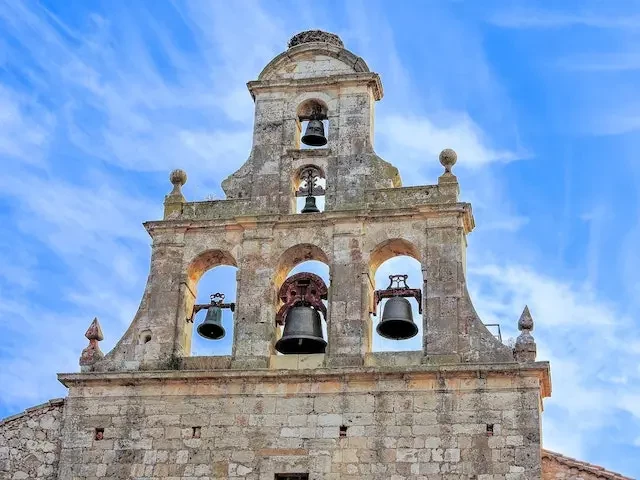
For breathtaking panoramic views of Paris, head to the Montparnasse Tower. Take the elevator to the observation deck on the 56th floor and be treated to a 360-degree vista of the cityscape. From here, you can spot famous landmarks, including the Eiffel Tower, the Louvre, and Notre-Dame Cathedral, all while enjoying a bird's-eye view of the city.
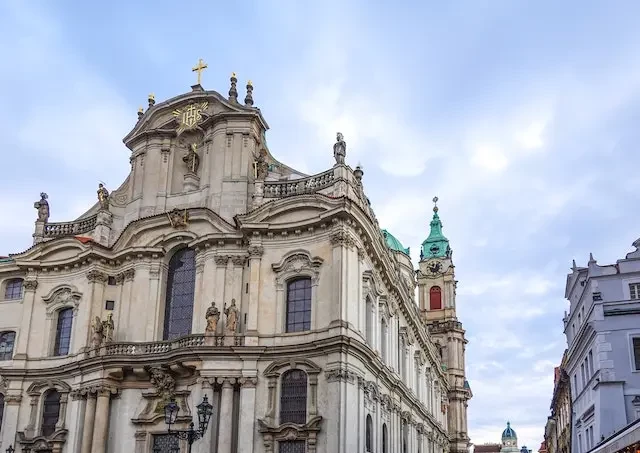
Saint-Germain-des-Prés is a neighborhood known for its rich cultural heritage. Wander through its charming streets lined with independent bookstores, art galleries, and cafes. Immerse yourself in the bohemian atmosphere that has attracted artists and intellectuals for centuries and soak up the creative energy that fills the air.
Paris, the City of Lights, offers a wide range of luxurious and charming accommodations for visitors seeking an unforgettable stay. From elegant boutique hotels to grand establishments boasting opulent amenities, there is something to suit every taste and preference. In this article, we will explore some of the top hotels in Paris, renowned for their exceptional service, exquisite design, and prime locations.
Situated in the heart of Paris on the prestigious Place Vendôme, The Ritz Paris is an epitome of timeless luxury. This legendary hotel has welcomed distinguished guests for over a century, offering lavishly decorated rooms and suites, Michelin-starred dining experiences, and a world-class spa. With its impeccable service and unparalleled attention to detail, The Ritz Paris continues to be a symbol of elegance and sophistication.
Nestled near the Champs-Élysées, the Four Seasons Hotel George V exudes glamour and refinement. Its elegant rooms and suites showcase a perfect blend of classical and contemporary design, while the hotel's Michelin-starred restaurants, including the renowned Le Cinq, tantalize guests' taste buds with exquisite culinary creations. The hotel also features a spa, fitness center, and a beautiful courtyard garden, providing a tranquil oasis in the heart of the city.
With its prime location overlooking the Tuileries Garden and the Louvre Museum, Le Meurice offers a captivating blend of history and modernity. This prestigious hotel, known for its artistic heritage, has welcomed renowned artists, writers, and royalty throughout the years. Its opulent rooms and suites are adorned with exquisite artworks and offer breathtaking views of Paris. Guests can indulge in culinary delights at the hotel's Michelin-starred restaurant, enjoy rejuvenating spa treatments, and experience the epitome of Parisian luxury.
Situated on the iconic Avenue Montaigne, Hotel Plaza Athénée stands as a symbol of Parisian elegance and sophistication. Its sumptuous rooms and suites showcase refined French decor, while its Michelin-starred restaurant, Alain Ducasse au Plaza Athénée, offers a gastronomic journey par excellence. Guests can also enjoy the hotel's Dior Institut spa, which combines luxury and well-being for a truly indulgent experience.
Located in a former palace near the Trocadéro and boasting magnificent views of the Eiffel Tower, the Shangri-La Hotel, Paris is a haven of serenity and luxury. The hotel's rooms and suites seamlessly blend traditional French elegance with Asian influences, creating a unique and enchanting ambiance. Guests can savor gourmet cuisine at the hotel's Michelin-starred restaurant, relax in the spa and wellness center, or simply bask in the breathtaking views of Paris from their rooms.
When arriving at one of Paris's airports, you have several transportation options to reach the city center or your desired destination:
Airport shuttle services provide convenient transportation between the airports and various locations in Paris. These services operate on a regular schedule and offer door-to-door transfers. You can book a shuttle in advance or find them at designated stops outside the arrival terminals.
The RER (Regional Express Network) trains connect Paris airports to the city center and surrounding areas. From Charles de Gaulle Airport (CDG), you can take the RER B line, which provides direct access to major train stations and central Paris. From Orly Airport (ORY), the Orlyval shuttle connects to the RER B line at Antony station
Taxis are readily available at Paris airports, and you can easily find them at designated taxi ranks. Taxis offer a convenient and comfortable way to reach your destination directly. Rideshare services like Uber and Lyft also operate at Paris airports, providing an alternative option for transportation.
Airport express buses, such as the Roissybus from Charles de Gaulle Airport and the Orlybus from Orly Airport, offer direct transfers to central Paris. These buses provide a cost-effective option, and they usually operate at regular intervals throughout the day.
If you prefer to have your own vehicle during your stay in Paris, several car rental agencies have offices at the airports. Renting a car gives you the flexibility to explore the city and its surrounding areas at your own pace. However, it's important to consider traffic and parking conditions in Paris, especially in the city center.
Paris is served by several airports, with the two main ones being Charles de Gaulle Airport (CDG) and Orly Airport (ORY). These airports accommodate numerous international and domestic airlines, including:
These are just a few examples of the many airlines operating at Paris airports. Whether you're flying from Europe, North America, Asia, or other parts of the world, you'll find a wide range of airlines offering connections to and from Paris.
When planning your trip to Paris, consider the airport and airline options that best suit your needs in terms of location, flight availability, and budget. With the extensive transportation options available from the airports, you'll have no trouble reaching your desired destination in the vibrant and captivating city of Paris.
1. What is the best time to visit Paris for a dreamy vacation?
The best time to visit Paris for a dreamy vacation is during the spring (April to June) and fall (September to October) seasons. The weather is mild, and the city is less crowded compared to the peak summer months. Spring brings blooming flowers, while fall offers beautiful foliage, creating a picturesque ambiance for your trip.
2. How many days should I allocate to explore Paris?
To fully experience the charm of Paris, it is recommended to allocate at least four to five days. This will allow you to visit the top attractions, indulge in French cuisine, stroll through the neighborhoods, and immerse yourself in the cultural offerings of the city. However, if you have more time, you can delve deeper into the hidden gems and take day trips to nearby destinations.
3. Are there any dress codes for visiting religious sites in Paris?
When visiting religious sites in Paris, such as Notre-Dame Cathedral or Sainte-Chapelle, it is advisable to dress modestly out of respect. Both men and women should ensure their shoulders and knees are covered. Carrying a scarf or shawl to cover bare shoulders can be helpful. It's always a good idea to check specific dress codes if you plan to visit other religious sites during your trip.
4. How can I make the most of my visit to the Louvre Museum?
The Louvre Museum is vast, so planning ahead can help you make the most of your visit. Start by prioritizing the artworks or exhibits you wish to see the most. Consider booking tickets in advance to avoid long queues. It's also helpful to have a map of the museum or use a guided tour to navigate through its extensive collection. Don't forget to take breaks and appreciate the museum's architectural beauty.
5. Is it necessary to learn French to navigate Paris?
While it's always appreciated when visitors make an effort to speak French, navigating Paris is still possible without fluency in the language. Many locals in tourist areas and establishments speak English, and signs and transportation information are often available in both French and English. Learning a few basic phrases and using polite gestures can go a long way in interacting with the locals and enhancing your experience.